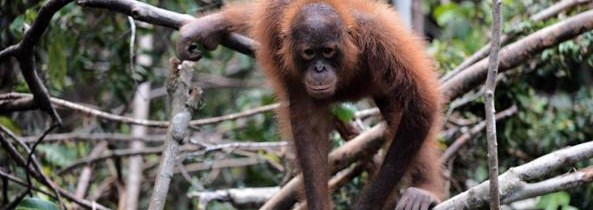You don’t need a scientist to know what’s causing the sixth mass extinction Paul R Ehrlich
One should not need to be a scientist to know that human population growth and the accompanying increase in human consumption are the root cause of the sixth mass extinction we’re currently seeing. All you need to know is that every living being has evolved to have a set of habitat requirements.
An organism can’t live where the temperature is too hot or too cold. If it lives in water, it requires not only an appropriate temperature range, but also appropriate salinity, acidity and other chemical characteristics. If it is a butterfly, it must have access to plants suitable for its caterpillars to eat. A lion requires plant-eaters to catch and devour. A tree needs a certain amount of sunlight and access to soil nutrients and water. A falciparum malaria parasite can’t survive and reproduce without Anopheles mosquitos in its habitat and a human bloodstream to infest.
The human population has grown so large that roughly 40% of the Earth’s land surface is now farmed to feed people – and none too well at that. Largely due to persistent problems with distribution, almost 800 million people go to bed hungry, and between one and two billion suffer from malnutrition. As a consequence of its booming population, Homo sapiens has taken much of the most fertile land to grow plants for its own consumption. But guess what? That cropland is generally not rich in food plants suitable for the caterpillars of the 15,000 butterfly species with which we share the planet. Few butterflies require the wheat, corn or rice on which humans largely depend. From the viewpoint of most of the Earth’s wildlife, farming can be viewed as “habitat destruction”. And, unsurprisingly, few species of wildlife have evolved to live on highways, or in strip malls, office buildings, kitchens or sewers – unless you count Norway rats, house mice, European starlings and German roaches. Virtually everything humanity constructs provides an example of habitat destruction.
The more people there are, the more products of nature they demand to meet their needs and wants: timber, seafood, meat, gas, oil, metal ores, rare earths and rare animals to eat or to use for medicinal purposes. Human demands cause both habitat destruction and outright extermination of wildlife. So when you watch the expansion of the human enterprise; when you see buildings springing up; when you settle down to dinner at home or in a restaurant; you are observing (and often participating in) the sixth mass extinction.
The expanding human population not only outright destroys habitats, it also alters them to the detriment of wildlife (and often people themselves). The more people there are, the more greenhouse gases flow into the atmosphere, and the greater the impacts on wildlife that require specific temperature ranges.
And the more people there are, the more cities, roads, farm fields, fences and other barriers preventing wildlife from moving to areas of more favourable temperature or humidity in a rapidly changing climate. Less recognised, but perhaps even more dangerous to both people and wildlife, is the increasing toxification of the entire planet with synthetic chemicals. Growing populations want myriad more items of plastic that often leak toxic chemicals: more cosmetics, cleansing compounds, pesticides, herbicides, preservatives and industrial chemicals. Many of these novel chemicals mimic natural hormones, and in tiny quantities can alter the development of animals or human children, with potentially catastrophic consequences. As with climate disruption, this is one more case of human overpopulation threatening civilisation.
So we don’t really need the evidence meticulously gathered and analysed by the scientific community showing the unusual and accelerating extermination of wildlife populations – and ultimately, species – to know that human population growth is a major and growing driver of the sixth mass extinction, just as it is with the related accelerating climate disruption. It will take a long time to humanely stop that growth and start the gradual shrinkage of the human population that is required if civilisation is to persist. All the more reason we should have started a half century ago, when the problem first came to public attention.
Fonte: The Guardian



